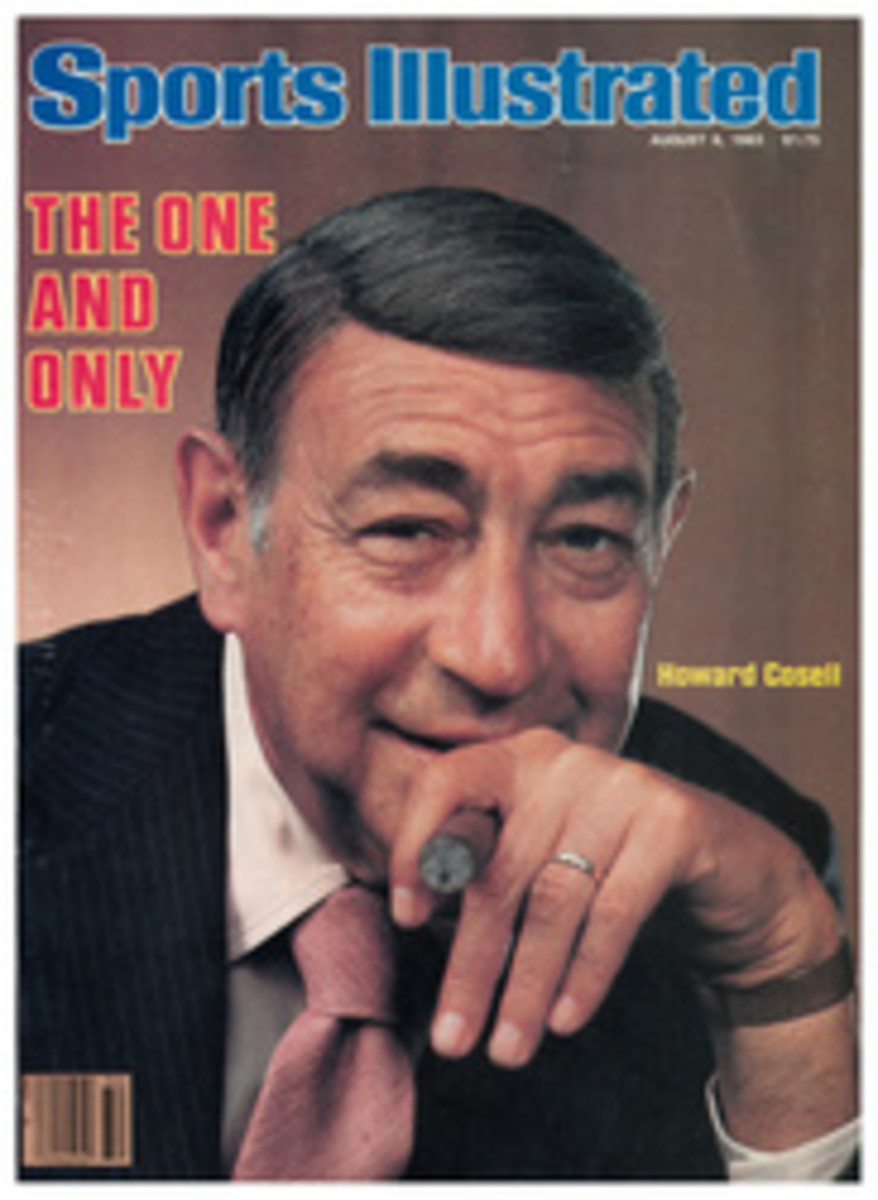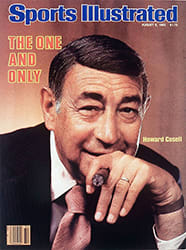
The intrigue lies down under
The middle weeks of July were everything a Newport, R.I. summer ought to be. A handsome young prince came to town, the sun shone day after sparkling blue-and-white day, the British gave a fairy-tale ball that Mrs. Astor would have envied, and out on Rhode Island Sound 10 beauteous 12-meter yachts raced and beat one another with no regard whatever for the winter-book odds. Everybody agreed this was the best America's Cup summer in years.
Then England's handsome Prince Andrew went home, the sun claimed a lay day or two, the Australians reportedly installed an electronic shield around the secret keel of Australia II (to deter espionage, they said), a Canadian, undeterred, was arrested while trying to photograph the keel, the New York Yacht Club up and charged that the keel in question was illegal, and out on the water the Twelves sorted themselves into top dogs, underdogs and just plain dogs.
Top dog among the foreign boats was Alan Bond's entry from the Royal Perth Yacht Club in Western Australia. By last weekend, two-thirds of the way through the third round-robin series to determine the challenger, Australia II had gone to sea 36 times and had come home the winner 33 times. Her losses, two in the first series and one in the second, were to Challenge 12, her Australian sparring partner from Melbourne, Victory '83, Peter de Savary's British entry, and Azzurra, the Italian newcomer.
Bond, the pugnacious, 45-year-old millionaire who heads the Australia II syndicate, is a high roller in the mold of Sir Thomas Lipton, the Irishman who between 1899 and 1930 tried unsuccessfully to capture the Cup five times. Bond has now taken the America's Cup plunge four times—with Southern Cross in 1974, Australia in 1977 and 1980 and now with Australia II—but so far, in spite of having spent an estimated $16 million along the way, he has yet to cash any chips. However, experience counts almost as much as money in the 12-meter game, and this could just conceivably be Bond's year.
As Australia II's string of victories lengthened, a few mutterings reached print to the effect that she was suffering from inadequate competition. But John Bertrand, the tall, slim Melbourne sail-maker who handles her helm, put the gripes in perspective. "Day before yesterday, I said to the crew that I was worried that we weren't being pushed enough," he said. "Then, bingo, we had two races, one against Azzurra and the next against Challenge, that were just fantastic. So you never know. We sail pretty hard out there, and even though the times look pretty good, we've had some very, very close racing."
Battling for positions behind Australia II were Azzurra, Canada I, Challenge 12 and Victory '83. Every time the challengers raced, which was every day, the standings from second through fifth place had to be rearranged on the big brown scoreboard outside the challengers' tent on Newport's Thames Street. France 3 and Advance, the third Australian entrant, were already mathematically assured of being sent home before the start of the challengers' semifinal on Aug. 11. But one more boat remained to be eliminated, and the four-way dogfight to avoid being that boat provided midsummer's best entertainment.
Poor Advance, which has won only two races the entire summer, had her misfortunes capped last Friday when her mast broke in heavy seas. "We hit a couple of big waves, the mast got out of column and exploded," said Iain Murray, her skipper, as he surveyed the wreckage. Designed specifically for light airs, Advance is a gamble that failed.
Australia II, with her radically different keel which has been shielded from public view every night by a jury-rigged contraption of plywood and green plastic sheeting, is another gamble. To make her extremely maneuverable in starts and tacking duels, while at the same time maintaining stability, Ben Lexcen, the 47-year-old designer of both Australia II and Challenge 12, created a keel that is much smaller than the conventional 12-meter's. The bulk of its weight is concentrated in a bulb of lead that sits at the bottom of the leading edge of the keel. Behind the bulb are swept-back "fins." That much everybody in Newport seemed to know, in spite of all the secrecy. What was unknown was precisely how the elements are put together and, more important, whether or not it is the keel that accounts for Australia II's extraordinary success so far.
The New York Yacht Club seems to think it may be. In a July 24 memo addressed to the International Yacht Racing Union, the NYYC contended that Lexcen's fins are illegal under the rating rule and measurement instructions of the 12-meter class, and cited the Australian's secrecy gambit as "conclusive proof of a "peculiarity" that gives Australia II "an advantage she would not otherwise have." The Australians replied that the only unfair advantage was that they thought of the fins first.
Fear of a design breakthrough is what keeps a lot of rich men awake nights in Newport. It doesn't happen often. The last legitimate breakthrough was Olin Stephens' Intrepid in 1967. Stephens was the first to separate the rudder from the keel in a 12-meter, moving the rudder aft and installing a trim tab on the trailing edge of the keel to compensate. Most changes in 12-meter design have been refinements rather than great leaps forward. And as boats designed to the 12-meter rule get better, it grows harder and harder to find ways to improve them.
"What we may be looking at is that the 12-meter rule has been pretty much exploited to the hilt," says Owen Torrey, the performance evaluator for Courageous. "In 1958, let's say, the boats were 66 percent of perfect. You get up to where they're 98 percent of perfect and it's very hard to put another boat into those two percent."
America's Dennis Conner and his Freedom Campaign have tried to do just that. They have built three new 12-meters since 1981, trying to improve on Freedom, the 1980 Cup winner. At the 11th hour they settled on Liberty, a cranberry-red-hulled refinement of Freedom, and the choice seems to have been the right one. At the end of the July Observation Trials, Liberty had surged well ahead of Defender and Courageous, with 15 wins and five losses. Tom Blackaller's Defender took four of the July races from Liberty, but only two of them were wins on the water. The other two were the results of protest. John Kolius' Courageous managed to beat Liberty only once in July, on the second day of the series, but that was the race of the summer—and, some said, of several summers. It was a classic tactical duel fought over six legs and 19 miles. The lead changed back and forth, the boats were overlapped at two marks and never separated by more than 12 seconds at any of them, and at the finish, after almost three hours of racing. Courageous nosed out Liberty by eight seconds.
In preparation for August's Final Trials to choose the defender, the races that really count, Defender will go under the buzz saw at Newport Offshore, Ltd. Her stern will be reshaped in hopes of improving her performance upwind and in sloppy seas. Courageous awaits new sails that Kolius hopes will make the difference. And Conner, who now seems to have taken the measure of his two American opponents, can only wait and wonder just how formidable the Australia II challenge really is.
"There have been breakthroughs before and there will be breakthroughs again," says Conner. "But we can't wring our hands about it. The Australians certainly have our attention, but at this point we don't know what we don't know, and nobody else knows either."
With a 132-year-old winning streak at stake, not knowing can make people—especially members of the NYYC—testy, at best. And to make matters worse, the Aussies like nothing better than to talk about how things will be when they win the America's Cup. "The defense of the trophy would be held off Fremantle," says Bertrand, grinning at the discomfort he knows his words will provoke. "It is probably the most perfect 12-meter sailing ground in the world. It's glorious. The sun shines all the time. It's quite Utopian from a climatic point of view."
And quite unthinkable from another. Leave Newport? And funky old Thames Street? Never. But, by the way, just where is this Fremantle?
PHOTO
The plastic curtain conceals Australia II's mysterious keel, the subject of much of Newport's news.
PHOTO
Bertrand ashore with daughter Sunshine.

